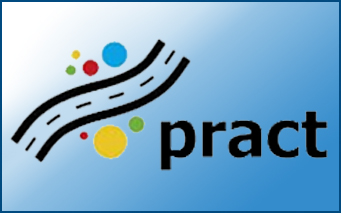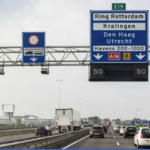
Conference of European Directors of Roads (CEDR) has published its fourth biennial report in 2016 on the performance of the TEN-T (Roads) network within CEDR member countries. CEDR’s intention in collecting and publishing this information is to establish a stable set of data with which to monitor trends and identify changes in the performance of the TEN-T (Roads) network. As such, the report is a useful source of information for individual National Road Administrations (NRAs), regulatory bodies, and others for benchmarking purposes and for setting national performance targets. ![]()

NTUA within the framework of the Fourth UN Global Road Safety Week organised with great success a Workshop titled “The Future of Road Safety Research” on 15 May 2017 at the NTUA Campus in Athens. The objective of this Workshop was to highlight through an intensive flow of presentations the main findings and challenges of key road safety research projects carried out within the NTUA Laboratory of Traffic Engineering and to open up the discussion in a round table on the future of road safety research in Greece, in Europe and worldwide. Special emphasis was be given to managing speed for improving road safety in line with the UN Global Road Safety Week objectives. ![]()
Workshop presentations concerned:
![]()
![]() The NTUA Road Safety Observatory – Nrso
The NTUA Road Safety Observatory – Nrso
![]()
![]() The European Road Safety Observatory – Erso+
The European Road Safety Observatory – Erso+
![]()
![]() The European Road Safety Decision Support System – SafetyCube
The European Road Safety Decision Support System – SafetyCube
![]()
![]() The CEDR Road Safety APM and CMF Repository – Pract
The CEDR Road Safety APM and CMF Repository – Pract
![]()
![]() The African Road Safety Observatory – SaferAfrica
The African Road Safety Observatory – SaferAfrica
![]()
![]() Global benchmarking of road safety in cities – IrtadCities
Global benchmarking of road safety in cities – IrtadCities
![]()
![]() Predicting road accidents with real time data – WeatherSafe
Predicting road accidents with real time data – WeatherSafe
![]()
![]() Monitoring road safety culture in Europe – SafeCulture
Monitoring road safety culture in Europe – SafeCulture
![]()
![]() Monitoring road safety attitudes in Europe – Esra
Monitoring road safety attitudes in Europe – Esra
![]()
![]() Monitoring behaviour of older road users in Europe – ElderSafe
Monitoring behaviour of older road users in Europe – ElderSafe
![]()
![]() Monitoring road safety risk factors and measures – SafetyCube
Monitoring road safety risk factors and measures – SafetyCube
![]()
![]() Monitoring driver distraction – Distract
Monitoring driver distraction – Distract
![]()
![]() Monitoring behaviour of drivers with cognitive impairment – DriverBrain
Monitoring behaviour of drivers with cognitive impairment – DriverBrain
![]()
![]() Monitoring driver behaviour through mobile phones – OSeven
Monitoring driver behaviour through mobile phones – OSeven
![]()
![]() The future of road safety research – HELLASTRON
The future of road safety research – HELLASTRON
![]()
![]() The future of road safety research – Ministry of Infrastructure and Transport
The future of road safety research – Ministry of Infrastructure and Transport
![]()
![]() Quantitative Methods in Road Safety – HITE
Quantitative Methods in Road Safety – HITE

The 13th PRI World Congress and Exhibition on “Road Governance & its Impact on Road Safety: Achieving UN Decade of Action’s Road Safety Targets“, organised by La Prévention Routière Internationale (PRI) took place with great success in Gammarth, Tunisia, on 3 – 7 May 2017. The aim of the Congress was to: identify dangerous roadside hazards, understand the issues facing pedestrian, bicyclist, motorcyclist, public transport and non-motorized vehicle safety, obtain an understanding of work zones & how they can be made safer, learn how to create a road safety audit team and discuss how to collect data to assess the performance of roads, and how technology can be utilized to enhance operations and safety of roads. ![]()
![]() NTUA presentation concerned:
NTUA presentation concerned:
![]() ‘Road Safety Investments and Interventions in South East Europe‘
‘Road Safety Investments and Interventions in South East Europe‘

With 3500 people killed every day in traffic crashes the Manifesto #4RoadSafety issued by the Global Network for Road Safety Legislators highlights the measures that can help prevent this tragic waste of human life on the world’s roads. The Manifesto #4RoadSafety includes ten key recommendations to encourage parliamentarians to support the current United Nation’s Decade of Action for Road Safety (2011-2020), with focus on speed management, the safe system approach, occupational road safety, good governance and funding for road injury prevention, the role of the multilateral development banks and proposes a new UN target for road safety in 2030. ![]()
![]()
Download the Manifesto #4RoadSafety ![]() and the Recommendations:
and the Recommendations: ![]()

A new two-day short course “The Safe System Approach: Managing for Better Road Safety Results” which has been developed by the Loughborough University Design School in association with Jeanne Breen Consulting took place with great success on 11-12 April 2017, in Loughborough. The background to this initiative is the adoption of Safe System by an increasing number of agencies, cities and jurisdictions in the United Kingdom and in the British Road Safety Statement. This two-day course has been formulated to support professionals from the many sectors and disciplines involved in road safety and road traffic injury prevention, both in public and private sectors. The aim is to assist in the understanding of the Safe System goal and approach and what is involved in its broad implementation in terms of transport, planning, highway, vehicle, health, insurance, enforcement, education and research fields. ![]()

Since New York City adopted its Vision Zero policy in 2014, other cities across the US have launched their own initiatives aimed at eliminating traffic fatalities and serious injuries. The street safety advocacy group Transportation Alternatives held its third Vision Zero Cities conference, on 4-5 May in New York City, bringing together policy makers and experts from around the nation and world to formulate new strategies to save lives. “With traffic fatalities and injuries spiking across the nation, many Vision Zero cities are experiencing setbacks in their efforts as we begin 2017,” said Paul Steely White, Executive Director of Transportation Alternatives. “We’re calling on our street safety warriors and defenders to join forces and share ideas to keep the movement on track and rolling.” ![]()

SafetyCube is a research project funded by the European Commission under Horizon 2020, the EU Framework Programme for Research and Innovation, in the domain of Road Safety. The project started on May 1st, 2015 and runs for a period of three years with primary objective to develop an innovative road safety Decision Support System (DSS) that will enable policy-makers and stakeholders to select and implement the most appropriate strategies, measures and cost-effective approaches to reduce casualties of all road user types and all severities in Europe and worldwide. NTUA is actively contributing to all phases of the SafetyCube project. ![]()
The latest SafetyCube newsletter is now available, including very useful Practical Guidelines for determining the number of serious road injuries. ![]()
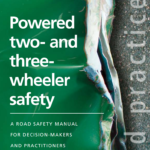
The World Health Organization has released a Road Safety Manual for decision-makers and practitioners concerning Powered Two- and Three-Wheeler (PTW) Safety. This Manual describes the magnitude of PTW death and injury; key risk factors; ways of assessing the PTW safety situation in a given setting and preparing an action plan; and how to select, design, implement and evaluate effective interventions. The Manual also stresses the importance of a comprehensive, holistic approach that includes engineering, legislation and enforcement measures, as well as behavioural changes. ![]()
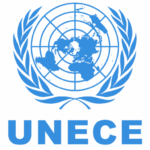
On March 23rd, during its 74th session, UN World Road Safety Forum discussed an Informal Document on automated driving. This document, submitted by the Chair of WP.1 Informal Working Group of Experts on Automated Driving (IWG-AD), provides a draft common understanding of the Vienna and Geneva conventions with regard to the use of automated driving functions. ![]()

More than 50 experts from cities around the world met in Paris, France, on April 20-21 for the first Workshop of the “Safer City Streets” global traffic safety network for liveable cities created by the International Transport Forum with support from the Fédération Internationale de l’Automobile (FIA) in October 2016. Just over six months after its launch, Safer City Streets counts 38 participating cities around the world. The first meeting provided the opportunity to exchange knowledge on road safety policies and learn from other cities’ experiences.
A joint workshop session with POLIS, the European network of cities and regions for sustainable transport, further explored the issue of risk exposure data and addressed collaboration with hospitals to improve knowledge of crashes. ![]() NTUA’s presentation concerned:
NTUA’s presentation concerned:

NTUA is inviting experienced researchers from EU countries established outside Greece, who would like to pursue a PostDoc research programme at the NTUA Department of Transportation Planning and Engineering, to apply for European or Global Fellowships of the Marie Curie Individual Fellowships Programme of the European Commission (deadline: September 14th, 2017).
The NTUA Department of Transportation Planning and Engineering is a world class centre on transport research excellence, offering high level research opportunities in state-of-the-art transport science disciplines, within a highly skilled and warm research team. Detailed requirements for application are available at the Marie Curie Programme website ![]()
![]() and for further information you can contact us.
and for further information you can contact us.

In conjunction with World Day for Safety and Health at Work on April 28, Together for Safer Roads (TSR) released the “Guidelines for Using Technology to Address Road Safety Challenges” Report. This Report is the second in its Advancing Road Safety Best Practices for Companies and Their Fleets series, outlines how to effectively apply safety technologies, like connected vehicles and infrastructure, autonomous vehicles and features, sensors and telematics, and consumer electronics, to fleet operations in order to pave the way to a golden era of road safety. ![]()
![]()

The International Road Transport Union (IRU) has recently launched the Guidelines on Safer Goods Reception, with aim to promote and ensure a safe and efficient working environment and use of the loading/unloading site for all stakeholders at the reception of goods. These IRU Guidelines provide information, rules and recommendations for different goods reception areas, taking into consideration safety, environment and cost effectiveness measures, enabling users to select the best solution based on its specific requirements. The Guidelines include general information on goods reception areas intended to facilitate the safe loading and unloading of goods and aim to contribute to an efficient and safe working environment for all new and existing reception areas. ![]()
![]()

The International Road Transport Union (IRU), the world’s road transport organisation, is leading a global initiative looking into the role and place of passenger transport, in particular that of buses and taxis, in the future mobility ecosystem by 2030. IRU is organising a Workshop on Mobility 2030, on 9 May 2017 in New Delhi, India. This workshop aims at contributing to a global vision on Mobility for achieving the Sustainable Development Goals 2030 and implementing New Urban Agenda as also to help the developing countries like India to address the challenge of rising congestion and pollution, particularly in urban areas, and to better tap into the tremendous opportunities that sustainable transport can make possible. ![]()

- Strengthening of institutional capacity to further national road safety efforts
- Improve the safety of road network
- Improve vehicle safety
- Improve road safety behaviors
- Improve care after traffic accident
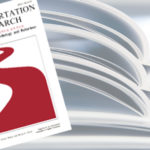
A paper titled ‘Simulation of Texting Impact on Young Drivers’ Behaviour and Safety on Motorways‘ co-authored by George Yannis, Alexandra Laiou, Panagiotis Papantoniou and Christos Gkartzonikas is now published in Transportation Research Part F: Traffic Psychology and Behaviour. A driving simulator experiment was carried out, in which 34 young participants drove in different driving scenarios. Results suggest that texting leads to statistically significant decrease of the mean speed and to increased headway in normal and in specific traffic and weather conditions on motorways, as drivers appear to produce compensatory behavior while texting. Furthermore, texting leads to increased accident probability, probably due to longer reaction time of the driver at unexpected incidents. ![]()

The project proposal HumAV “Human like Autonomous Vehicles” submitted under the Horizon 2020’s Marie Skłodowska-Curie actions call H2020-MSCA-IF-2016 of 14 September 2016 by Panagiotis Papantoniou and Technische Universitaet Muenchen, following evaluation by an international panel of independent experts was scored as a high-quality project proposal in a highly competitive evaluation process. ![]()
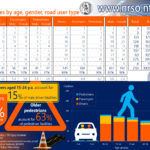
According to Hellenic Statistical Authority (ELSTAT) data, 793 persons were killed in Greece in 2015: 545 drivers, 120 passengers and 128 pedestrians. Male drivers account for 65% of all road fatalities in Greece. Young male drivers aged 15-24 years old account for 15% of all male driver fatalities and older people account for more than 63% of all pedestrian fatalities. The higher accident severity was found in accidents involving older persons (7.6 fatalities per 100 accidents) and younger persons (4.4 fatalities per 100 accidents). ![]()

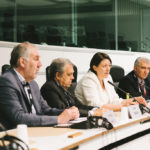
The European Association of Operators of Toll Road Infrastructures (ASECAP) held with great success its 10th Annual Road Safety Conference on Tuesday 21 March 2017 in Brussels on the theme: “Road safety – A shared responsibility. A story of success or failure?”, composed by two parts. Part One focused on a) EU priority on road safety: are we fulfilling the EU safety action plan? and b) The infrastructure of tomorrow: what role to play in the EU safety action plan (explanations and expectations)? Part Two concerned the theme Life saving chain: avoiding road safety fatalities and reducing serious injuries. ![]()
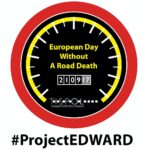
The European Traffic Police Network (TISPOL) together with the European Commission DG Move Road Safety Unit have launched the project EDWARD – the European Day Without A Road Death 2017. After just one year, Project Edward has earned its place on Europe’s road safety calendar. The 2017 European Day without a Road Death will take place on Thursday 21 September. Several events, initiatives and promotional activity right across Europe will take place. Moreover, there will be a brand new dedicated Project EDWARD website with lots of new resources, artwork you can download – including images and infographics, a social media schedule so you will know what we’re going to be doing and can align yourself with various messages in the build-up to the day and on the day itself, a countdown timer to the day itself (starting 11 June, 100 days before 21 September), an interactive map and a brand new pledge to sign. ![]()
![]()
Several EU countries have uploaded their videos about project EDWARD 2017: ![]()

The European Transport Safety Council (ETSC) has recently published the PIN Flash Report 32 ‘Reducing deaths in Single Vehicle Collisions‘, with the contribution of NTUA. A third of road deaths in the EU are caused by collisions that involve a single motorised vehicle where the driver, rider and/or passengers are killed but no other road users are involved. Several significant key recommendations to Member States and key recommendations to EU Institutions are included in this PIN Flash Report. ![]()
![]()

Road Safety GB is staging a national conference for road safety data analysts in Birmingham in March 2017. The conference, which was organised by Road Safety GB in partnership with Road Safety Analysis, has now become an annual event. The conference took place on Thursday 2nd March 2017 in Birmingham, UK. ![]()
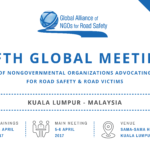
The Fifth Global Meeting of Nongovernmental Organizations Advocating for Road Safety and Road Victims took place on 3-6 April 2017 in Kuala Lumpur, Malaysia. The Alliance brought together global members, dignitaries and distinguished guests from the field of road safety and public health. There were ample opportunities for networking and learning from NGOs around the world. The main aims were to facilitate members’ continued involvement in reaching the Sustainable Development Goals and to prepare for important road safety key events, such as the Fourth UN Road Safety Week in May 2017. ![]()
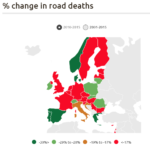
The European Transport Safety Council (ETSC) released some very interesting infographics including the latest data on road deaths across the European Union and other countries covered by ETSC’s Road Safety Performance Index (PIN) programme. Full analysis and background data tables can be found in the latest annual edition of the ETSC PIN report. ![]()

The European Commission, with the support of the EC-funded projects CARTRE and SCOUT, organized its First European Conference on connected and automated driving: ‘Connected and Automated Driving – Together, shaping the future’. The high-level conference was held in Brussels on the 3 and 4 April 2017. The event was a unique opportunity for all participants to network and to discuss on how to boost the development and deployment of connected and automated driving technologies from a fourfold perspective: transport policy issues; technological challenges; legal and regulatory frame, and digital transformation. ![]()

Every day, 3,500 people are killed on the roads. Young people are particularly affected as road crashes are the number one cause of death of 15 to 29 year old. This is an alarming trend, a plague that needs to be stopped, a human, economic and social cost which has become unacceptable. The Federation Internationale de l’Automobile (FIA) together with our 245 member organisations around the world. Everyone has a role to play in making safer roads for all. The #3500LIVES campaign outlines the 10 rules that can help save your life and the lives of others. FIA encourages to sign up to the FIA Manifesto for Global Road Safety which calls on all Governments to prioritise road safety and introduce effective legislation on key risk factors on the road. ![]()
![]()

The International Transport Forum (ITF) launched recently a new visualisation tool for transport indicators, including road fatalities data. The tool makes it possible to compare trends across countries, create rankings or show data on a map.
19 indicators for more than 50 countries cover topics including CO2 emissions, road safety, infrastructure investment, modal shares and the transport network. ![]()
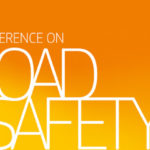
The European Commission, in collaboration with the Maltese Presidency of the European Union, organised with great success a High-Level Conference on Road Safety in Valletta, Malta. This participatory stakeholder event brought together road safety experts, stakeholders and political decision-makers on 28th March 2017, followed by a Ministerial Conference on the 29th March 2017. The objective of this conference was to launch a political debate and outline future political direction. ![]()
- The Presentation of the 2016 road safety statistics by the Commissioner for Mobility and Transport, Violeta Bulc:

- The Valletta Declaration on Road Safety:

- The Recommendations about: Road safety strategies and policies
 , Enforcement of traffic rules
, Enforcement of traffic rules  , Infrastructure safety
, Infrastructure safety  , Smart road solutions
, Smart road solutions  , Vulnerable road users
, Vulnerable road users 
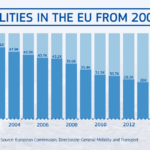
The European Commission has published the most recent road safety statistics, based on provisional data for 2016 road deaths in Europe indicating a drop of 2% in the number of fatalities recorded across the EU last year. 25,500 people lost their lives on EU roads in 2016, 600 fewer than in 2015 and 6,000 fewer than in 2010. A further 135,000 people were seriously injured on the road according to Commission’s estimates. Following two years of stagnation, 2016 marks the return of a positive downwards trend and over the last six years, road fatalities have been cut by 19%. While this pace is encouraging, it may nevertheless be insufficient if the EU is to meet its target of halving road fatalities between 2010 and 2020, as said by Commissioner for Transport Violeta Bulc. ![]()


















































































